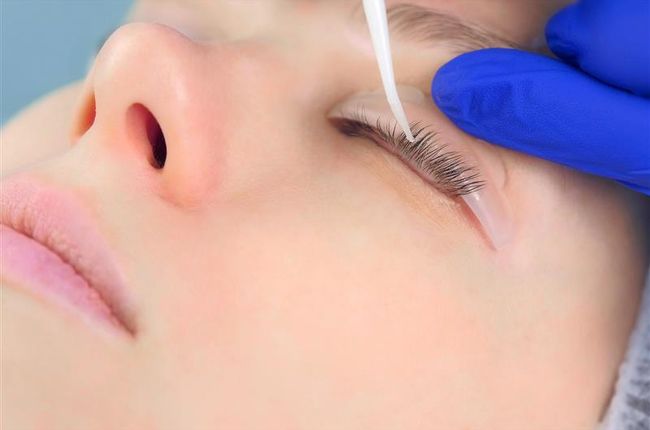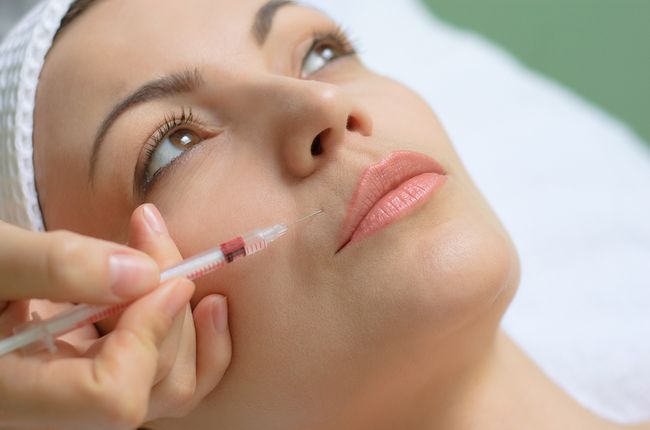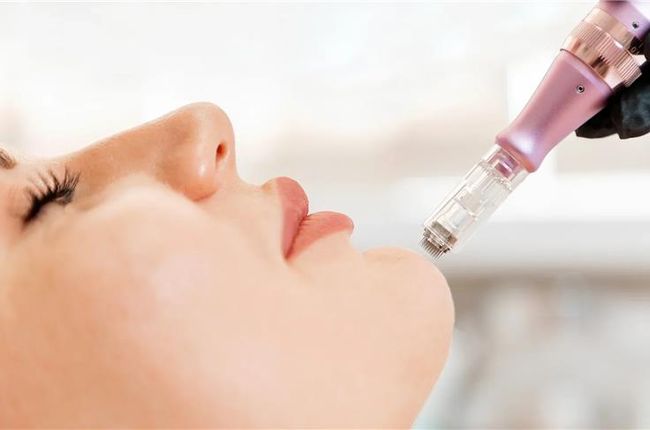Hyperbaric Oxygen Therapy
WHAT IS HYPERBARIC OXYGEN THERAPY (HBT)?
HBT is a method of delivering extra oxygen into the body, mainly through the process of increasing the pressure that the body is normally under. In terms of HBT, pressure is normally quantified in ATA and currently we are all standardized to be less than 1.0 ATA of atmospheric pressure. When someone undergoes hyperbaric therapy, the pressure becomes greater than 1.0 ATA and in hospitals and wound care centers can typically reach 2.0 or even 3.0 ATA. Each atmospheric pressure represents 33 feet of seawater, so at 2.0 ATA, it would be equivalent for you to be at a depth of 33 feet below sea level. Once at this depth, 100% oxygen is typically administered for the full duration of the treatment, which normally lasts for 60 to 90 minutes per session, and this procedure can be repeated twice per day with a 4-hour break in between. For chronic or hard-to-heal wounds, this dosage is typically repeated daily from anywhere between 10 and 80 hours.
WHAT IS HBT USED FOR?
- The FDA approves hyperbaric treatments for ONLY for the following 14 conditions and for altitude sickness
- 14 Medical conditions -- Decompression Sickness, Gas embolism, CO and Cyanide poisoning, Gas Gangrene, Selected aerobic and anaerobic soft tissue infections, Osteomyelitis, Intracranial abscess, Management of Fungal disease, Radiation injury to tissue, Exceptional blood loss/anemia, Crush injury/compartment syndrome, Ischemia reperfusion injuries, Skin grafts and flaps, Healing in selected problem wounds, Treatment of thermal burns, and Idiopathic sudden sensorineural hearing loss. Typical treatment pressures range between 2.0 to 2.5 ATA for most of these 14 conditions.
- Altitude sickness – Treatment pressure is 1.3 ATA (also known as mild hyperbaric therapy or m-HBT)
- 1.3 ATA is commonly termed m-HBT (mild hyperbaric therapy) and an FDA cleared approved treatment for those suffering from altitude sickness, where oxygen levels can become dangerously low at higher elevations -- a condition that is life threatening. The extra oxygen delivered through m-HBT is so significant that it can be enough to help reverse this lifethreatening condition!
- Off-label indications prescribed by a doctor
- Many doctors and clinical researchers in the field of hyperbaric medicine believe that HBT may help many more conditions and improve quality of life. Please be aware that if you are using this to treat a medical condition other than the 15 above conditions, then the FDA considers this an ‘off-label’ treatment and wishes you to make sure that you have sought out all FDA-approved treatments first and fully understand the benefit to risk ratio before making your decision. Typical treatment pressures vary between 1.3 – 2.4 ATA.
- General health and wellness
- HBT is becoming more popularized for the physiological and energetic support being achieved from the surplus levels of oxygen created when breathing in a hyperbaric environment. Typical pressures used for general health and wellness range between 1.3 and to 2.0 ATA (Again, 1.3 ATA is often described as mild hyperbaric therapy or m-HBT). Note, not everyone is ‘fit’ for being in a pressurized environment so If you are using HBT for its physiological benefits to support overall health and wellness, proper hyperbaric ‘fitness’ screening by a healthcare provider is required before undergoing any HBT sessions.
***The FDA once again cautions the use of HBT or m-HBT if it’s not used for one of the 14 approved medical conditions or for altitude sickness respectively. Although these lower pressures have both been reported to have significant benefits, which are now being supported and validated though clinical research trials, we would still encourage you to follow the FDA guidelines in looking into ‘medically-approved’ options if you are looking at using HBT to help with a medical condition.
ARE LOWER PRESSURES STRONG ENOUGH?
Lower pressure protocols at 1.3 to 1.5 ATA can effectively deliver these higher levels of oxygen, while allowing for greater safety. Note, it does not take much pressure to deliver extra amounts of physiologically available oxygen. The added pressure allows extra oxygen to be absorbed and transferred from the lungs into the blood, causing a greater saturation of blood oxygen levels. As this rich oxygenated blood makes its way to damaged tissue, extra oxygen is now readily available and can be potentially utilized for enhancing tissue repair and regeneration while also still being able to provide its potent anti-inflammatory and anti-bacterial effects.
If greater oxygen dosages are required to localized tissue, then the procedure can be combined with low level light therapy (LLLT) at wavelengths between 650 and 880 nm). Flexible light pads delivering the LLLT can be used directly over the area being treated. This combination of low-pressure hyperbaric therapy with LLLT is often termed t-HBT or targeted hyperbaric therapy, as this procedure basically ‘points’ to an area of the body to help deliver the effects of HBT to that focused area -- a targeted approach. Both therapies have been individually shown to exert positive effects, but the combined approach has recently been reported to have much greater effects. While still in its research phase, t-HBT may prove to be a powerful tool for localizing the effects of HBT.
DO I HAVE TO BREATHE 100% OXYGEN OR AMBIENT AIR?
Traditionally, hyperbaric oxygen is defined as breathing 100% oxygen under pressure. However, ambient air still contains 21% oxygen, and when you breathe it under pressure, more oxygen will get transferred into the body. More importantly, the extra oxygen enters the blood plasma (liquid) and gets oxygen into much deeper areas (i.e., where inflammation impedes blood flow) and in places where red blood cells cannot normally reach. This is a great technique to achieve greater levels of oxygen without the associated risks of being in high oxygen environments.
WHAT IS THE RECOMMENDED SCHEDULE?
The reported benefits using hyperbaric oxygen therapy have typically been from those who have had one to two sessions per day (with a 4-hour interval between the start of each session for those who have 2 sessions per day). People who live nearby may choose to do one session daily. The leading proponents of HBT recommend a minimum of 20 sessions and preferably up to 40 in the initial schedule. Following 40 sessions, you may re-evaluate for discernible benefits before proceeding. If you have local areas of concern, you may combine this procedure with Near Infrared Light therapy, providing a focused approach, which we have found has provided noticeable benefits when applied even for just once or twice per week.
HOW LONG DOES EACH SESSION LAST?
Hyperbaric sessions are typically 60 minutes but can vary from 30 -120 minutes. Sessions that last more than 60 minutes can take longer, as 5-minute air-breaks may be required. This is for safety precautions and are generally recommended when pressures exceed 2.0 ATA. The total session time must consider the time to both pressurize and depressurize. Lower pressure protocols will take less time to pressurize/depressurize (as little as 5 minutes each way), while higher pressure protocols will take longer (up to 25 minutes each way).
HOW DOES IT FEEL?
As the chamber is being pressurized, air presses on your eardrums and pushes them inwards. This pressure feels like the pressure that you feel in your ears when you are flying in an airplane. Most people (90%) automatically and easily adjust to these pressure changes, while reporting no adverse effects. If you are in the 10% minority, then the only problem that you may experience with this is either discomfort or pain in your ears or sinuses, like that which you would feel if you were congested while landing from an airplane. The only difference is that you ‘cannot tell the pilot on an airplane to stop’. In the case of HBT, we would encourage you to signal or radio the attendant immediately if you have discomfort in your ears or sinuses. Don’t wait until it really hurts. The attendant will stop pressurizing and decrease the pressure until you are comfortable and able to equalize the pressure. When you’re comfortable the attendant will resume pressurizing. Our attendants are well experienced at dealing with these cases and are willing to work with you as required. Here are some techniques in helping to equalize your ears:
- Try to swallow, yawn or drink sips of water. Turn your head to one side and swallow, then turn to the other side and swallow. Repeat if necessary.
- The Valsalva Maneuver – Pinch your nose closed, close your mouth, and lift the front-tip of your tongue towards the roof of your mouth. Attempt to blow through your pinched nose (short and sharp) but not too forcefully. This directs air from your throat into your ears and sinus air passages.
- A third method combines these techniques: try swallowing and wiggling your jaw while blowing gently against your pinched nose. Now that’s coordination!
- If you have a history of problems with the ear when flying or traveling in the mountains you may wish to use nasal decongestants before the first few treatments. With young children tilt their head back and you can put one drop of pediatric (baby) nose drops in each nostril one and a half to two hours before HBOT. Wait 5-10 min. and then put a second drop in each nostril. You can use Afrin or a similar nasal spray 20-30 minutes after the nose drops. Do not repeat the nasal spray.
WHAT IS MY ROLE AND RESPONSIBLILTY TO ENSURE SAFETY?
Your role is quite simple: to show up on time, communicate with our staff and attendants each time, and let them know if there are any changes in your health. For example, you may have reported on your first visit that you were not pregnant, but when you come in for multiple visits it is your responsibility to let us know if there are any changes in your health, and in this example, it would be ‘if you are potentially pregnant’. This is the reason why the checklist for on-going hyperbaric sessions* must be answered each time you go into the hyperbaric chamber. This is for your safety and once again it is your responsibility to let us know each time you go in ‘if there are any changes’ in your health.
CHECKLIST FOR ON-GOING HYPERBARIC SESSIONS
Please inform the staff EVERY TIME you enter the hyperbaric chamber if:
- There have been any changes in your health, in your medical condition, or in your medications/supplements
- You experience a cold, flu symptoms, sinus or nasal congestion, or chest congestion.
- There is a possibility you may be pregnant.
- You have skipped a meal prior to HBT treatment.
- You are a diabetic and did not take your insulin prior to treatment.
Also, inform the staff IF THE PRESSURE IS TOO GREAT FOR YOUR EARS. Often, people have trouble adjusting to an increased atmospheric pressure. If your ears hurt, inform the staff immediately and he/she can stop or slow down the rate of pressurization until you are comfortable. DO NOT LET IT GET PAINFUL!
The Airplane Analogy: In an airplane, if your ears are hurting, you cannot tell the pilot to stop climbing or descending. However, in a hyperbaric chamber, it is your responsibility to tell the chamber operator to slow down or stop the pressurization process. This will help avoid an unpleasant experience during your hyperbaric session. Please arrive at least 30 minutes prior to your scheduled treatment time. In consideration to all clients, we would like to start all treatments on time and late arrivals will result in delays. You may be denied entry into the Hyperbaric Chamber if you arrive late.
Thank you for your cooperation!
WHAT ARE THE RISKS, CONTRAINDICATIONS, AND AREAS OF CONCERN?
Hyperbaric oxygen therapy is very simple, non-invasive, and safe procedure. Hyperbaric oxygen therapy has demonstrated excellent safety records and generally is an extremely safe procedure. Serious adverse reactions are very rare, and generally not seen at lower dosages.
ABSOLUTE CONTRAINDICATIONS
Untreated Pneumothorax: The only absolute contraindication for hyperbaric oxygen therapy is an ‘untreated pneumothorax (collapsed lung)’. Anyone needing to enter a hyperbaric chamber with an untreated pneumothorax needs to have a chest tube inserted and evaluated by a medical practitioner before entering a hyperbaric chamber.
MOST COMMON SIDE EFFECT/ADVERSE REACTIONS
- Ear/Sinus discomfort: This occurs in about 10% of the population during the hyperbaric pressurization period. Taking extra time and making routine stops will help to reduce discomfort and is recommended as a precautionary measure for all clients undergoing HBT.
- Claustrophobia: Since you are in a closed environment, claustrophobia may occur. This is completely different from being in an MRI machine, as you can freely move around and can get out by yourself. Once the body acclimatizes to the inside environment and feels comfortable and with full control, the procedure is typically well-tolerated
Areas of Concerns, Risks, and Relative Contraindications
- Severe lung or heart disease: This is because we would not want fluid to build up into the lungs.
- Uncontrolled Diabetes: This is because we do not want the blood sugars to drop too low if HBT was combined with overdose of diabetic drug therapy.
- History of Seizure or Uncontrolled fever: This is because we would be concerned with exacerbating seizure activity, particularly if blood sugars are low.
- Changes in Vision: This is rare and a temporary change in vision that has been associated with higher pressure over extended time in HBT. Changes in vision include getting either a little worse (Myopia) or better (Presbyopia). NOTE: these cases are rare and associated with higher oxygen dosages. If you notice any changes, please let the attendant know and don’t worry as the vision tends to go back to its original state within 3 months from discontinuing the sessions. For that reason, it is not advised to change prescriptions during this time.
- Cataracts: Though HBT cannot cause cataracts, this procedure may cause formed cataracts to mature more quickly.
- Pregnancy: As a precaution, HBT is not used during pregnancy unless indicated for acute life-threatening conditions.
- Current upper respiratory infections, chronic sinusitis, or sinus problems: These conditions cause a higher probability of problems during pressurization and are generally recommended to be treated before going into HBT.
- Claustrophobia: Some clients may suffer from Claustrophobia. This is managed by maintaining communication, use of relaxation techniques and mild sedation, if necessary. If you have a problem with this condition, please let us know.
IS IT WARM INSIDE?
The air warms as we pressurize (before your session) and cools as we depressurize (after your session). Ventilation keeps the air moving when it is warm, and blankets are available if you become cold.
WHAT ABOUT SMOKING AND OTHER ODORS?
Smoke and other odors on your clothes are accentuated within the confines of the pressurized chamber. Try to minimize the detrimental effect of smoking on HBT results by abstaining within 1-hour pre and post treatment. Please do not use strong scented perfumes or deodorants.
NAD Shots in Downey, CA
NAD Shots in Placentia, CA
NAD Shots in La Mirada, CA

Lash Lift

Salmon DNA Booster Add-On

Exosome Add-On Treatment
Brow Treatments in Placentia
Brow Treatments in La Mirada, CA
Non-Surgical BBL in Downey, CA
Non-surgical BBL in Placentia, CA
Non-surgical BBL in La Mirada, CA
Radiesse Downey
Radiesse Placentia
PRP/PRFM Injections Downey
PRP/PRFM Injections Placentia
Gallery
Proudly serving communities of
We Only Use Industry Leading Injectables and Medical Spa Treatments"
Our Commitments To You
Office Hours
MON - FRI 9:00 am - 6:00 pm
SAT 9:00 am - 2:00 pm
SUN By appointments only.
Office Hours
Office Hours
Honest. Respectful. Iconic
Placentia
1041 East Yorba Linda Blvd. Suite 101 Placentia, CA 92870
(714) 225-5137Downey
8004 4th St,
Downey, CA 90241
Beverly Hills
9437 South Santa Monica Beverly Hills,CA 90210
(714) 225-5137